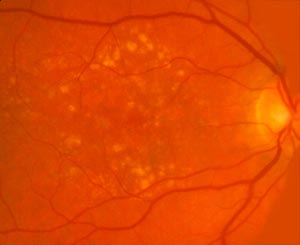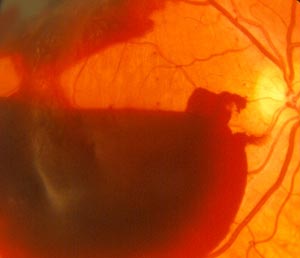
Central vision can be significantly affected with macular degeneration.
What is macular degeneration?
Macular degeneration is a deterioration or breakdown of the macula. The macula is a small area in the retina at the back of the eye that allows you to see fine details clearly and perform activities such as reading and driving.
Although macular degeneration reduces vision in the central part of the retina, it usually does not affect the eye’s side, or peripheral, vision. For example, you could see the outline of a clock but not be able to tell what time it is.
Macular degeneration alone does not result in total blindness. Even in more advanced cases, people continue to have some useful vision and are often able to take care of themselves. In many cases, macular degeneration’s impact on your vision can be minimal.





